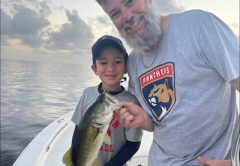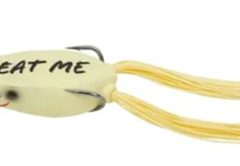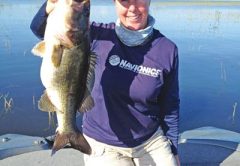This month we select a style of lure for our Lure of the Month rather than an individual lure. In the coming months Specks will be showing up in the shallows in large numbers for their annual spawn and the Crappie Jig should be a go-to lure for you. The Crappie Jig comes in many styles, materials, and colors. It seems just about every lure manufacturer has their own personal take on what a Crappie Jig should be. The thing is that at any one time one color or combination of colors will outperform the other. The reason behind this is somewhat of a mystery but we do know that Specks rely heavily on sight when foraging for food and many environmental factors impact the ability of a Speck to spot food.
First there is water clarity. Clear water allow the fish to easily spot food and it does not dull-out colors. Under clear water and bright light conditions choose bold colors such as red, orange, white, rich green, and deep blues. In stained, murky water, or low light conditions choose pastel colors such as pink, yellow, chartreuse, lighter blues, and black. This means if you’re on the water early in the morning your selection of color should change as the day gets longer or if the sun disappears behind the clouds.
Another environment factor impacting the ability of Specks to see their prey is the depth of the water you’re fishing in. The water column absorbs wavelengths of light with respect to depth. Colors of higher frequency are filtered out first while low frequency wavelengths penetrate farthest. The same is true for depth sounder transducers, high frequency transducers are for shallow water and low frequency transducers are for deep water imaging. A simple way to determine which colors are filtered out first is to refer to the colors of a rainbow. Red is a high frequency color and will be filtered out first and therefore should be used in shallow waters, followed by orange, yellow, green, and finally blue. Black is a good deep water color and so is white since black provides good contrast with the surrounding background colors while white reflects any available light within the water column.
A fish’s activity level is also a factor that influences the ability of a lure
to insight a strike. Active fish tend to strike lures that contrast against the environmental background while in-active fish will strike lures whose colors blend in with the background similar to a hiding baitfish. Lures with red, orange, yellow, and white colors are good contrasting colors while chartreuse, green, blue, and black are good for blending into the background.
Finally there is the well-known phrase ‘match the hatch’ which means present a lure that most resembles the food source that your target species is feeding on. If minnows are hatching and the Specks are feeding on baby minnows, present them with a lure that imitates a baby minnow not a half-pound shad.
If all this information is too much for you, the easiest and probably the best solution is to go to the bait shop nearest to the area you’re going to fish and inquire as to which lure is producing the best. Lure types and colors can and will vary from lake to lake and in the case of Lake Okeechobee it will vary from the north-end to the south-end so stopping in for some ‘local’ knowledge is probably the single most effective thing you can do to ensure you bring hope a cooler full of Specks for dinner.
[easy-social-share]







